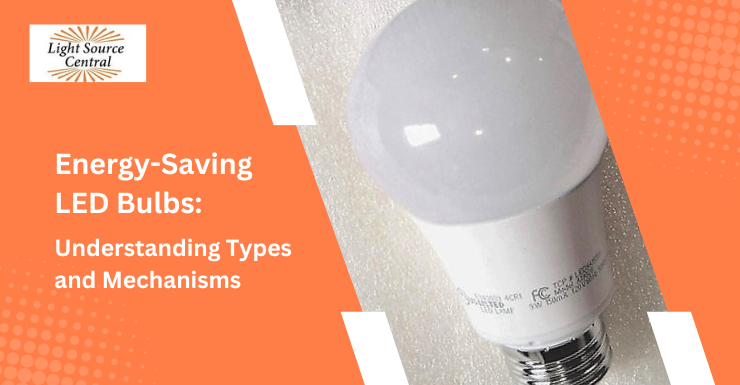Energy-Saving LED Bulbs: Understanding Types and Mechanisms
- Bob Larkin
- Jun 4, 2023
- 2 min read

In the quest for energy efficiency and sustainable living, LED (Light Emitting Diode) bulbs have emerged as a revolutionary lighting solution. Not only do they consume significantly less energy than traditional incandescent bulbs, but they also have a longer lifespan. At Light Source Central, we believe in the power of energy-saving LED bulbs to transform your lighting experience while reducing your carbon footprint.
Let’s explore the best energy-saving LED light bulbs, and their mechanisms, and guide you on how to choose the best options for your needs.
Understanding LED Technology:
LED bulbs produce light by passing an electric current through a semiconductor material. This process generates photons, creating illumination. Unlike traditional incandescent bulbs, which rely on heating a filament, LEDs are much more energy-efficient as they convert most of the electrical energy into light rather than heat. This characteristic makes them a superior choice for energy-saving lighting solutions.
Different Types of Energy-Saving LED Bulbs:
● LED A19 Bulbs: These are the most common LED bulbs that resemble traditional incandescent bulbs. They fit standard lamp sockets and come in a range of color temperatures to suit various applications.
● LED Flood Lights: Designed to provide broad, focused illumination, LED floodlights are ideal for outdoor lighting, security lighting, and illuminating large areas.
● LED Tubes: These linear LED bulbs are commonly used to replace traditional fluorescent tubes. They are energy-efficient and offer a longer lifespan, making them a popular choice for commercial and residential settings.
● LED Spotlights: Spotlights are perfect for accent lighting, highlighting specific areas or objects. LED spotlights offer precise and focused illumination while consuming minimal energy.
● LED Candle Bulbs: These LED bulbs are designed to mimic the shape of a candle flame. They are commonly used in chandeliers, wall sconces, and decorative lighting fixtures.
Mechanism Behind Energy-Saving LED Bulbs:
LED bulbs achieve energy efficiency through several mechanisms:
● Directed Light: LED bulbs emit light in a specific direction, unlike incandescent bulbs that disperse light in all directions. This focused light eliminates the need for reflectors or diffusers, ensuring maximum light output.
● Lower Heat Generation: LED bulbs produce significantly less heat compared to traditional bulbs. This not only reduces energy waste but also minimizes the risk of fire hazards.
● Dimming Capabilities: Many LED bulbs are dimmable, allowing users to adjust the brightness as needed. This flexibility saves energy and creates a customized lighting atmosphere.
Energy-saving LED bulbs are a game-changer in the lighting industry, offering both energy efficiency and superior performance. Understanding the different types of LED bulbs and their mechanisms will help you make informed choices when purchasing.
At Light Source Central, we offer a wide range of energy-saving LED bulbs to suit your specific needs. So, why wait? Buy energy-saving LEDs online from us. Visit our website today and join the movement towards a brighter, greener world.

Comments